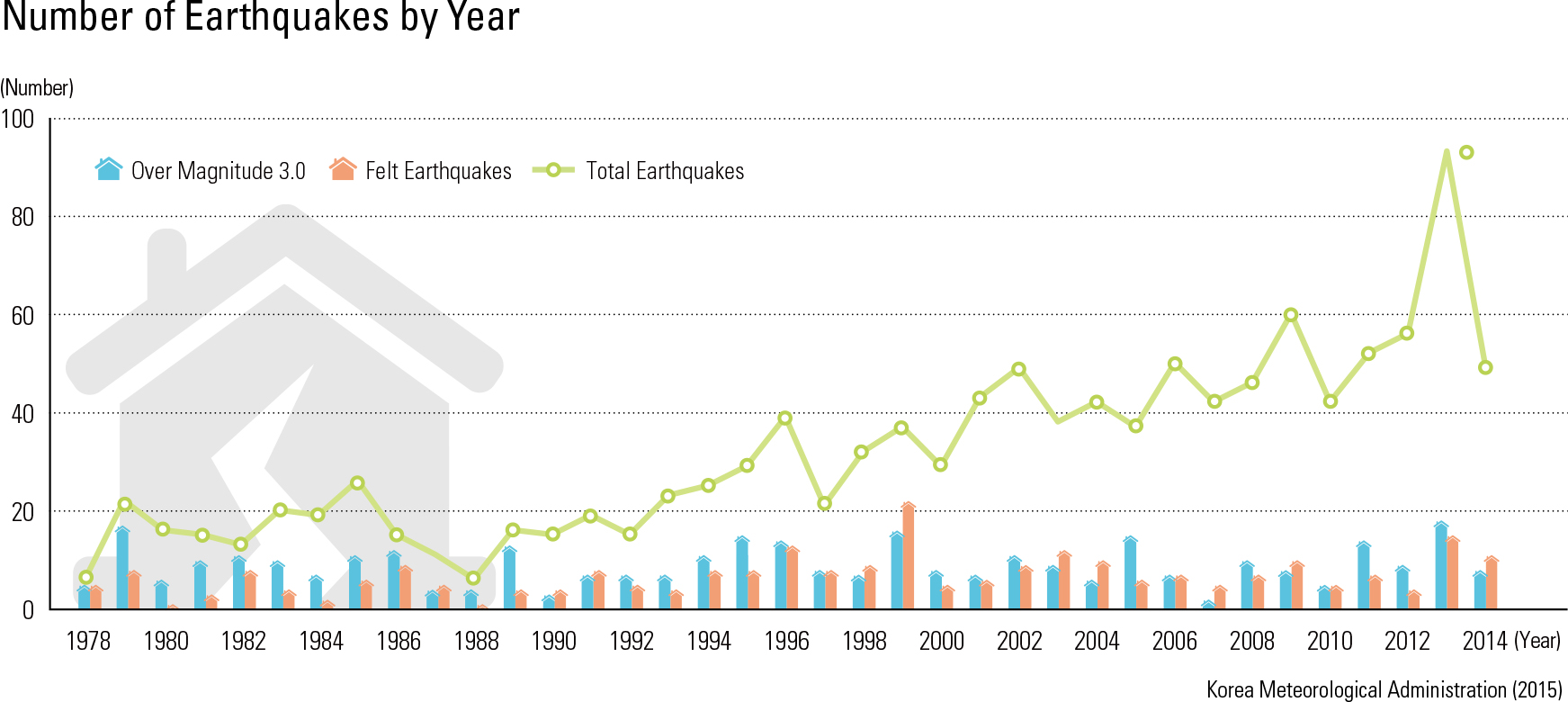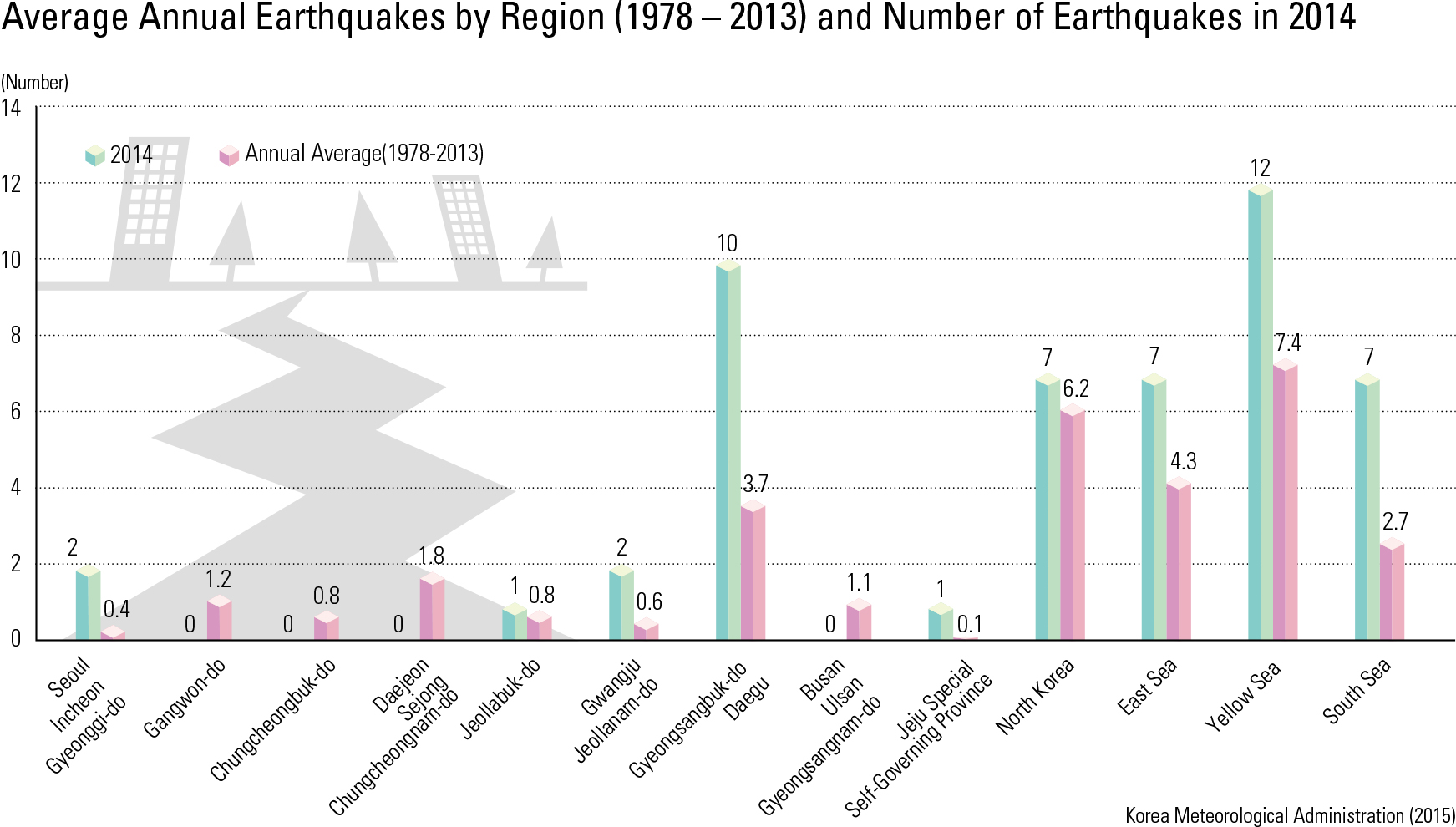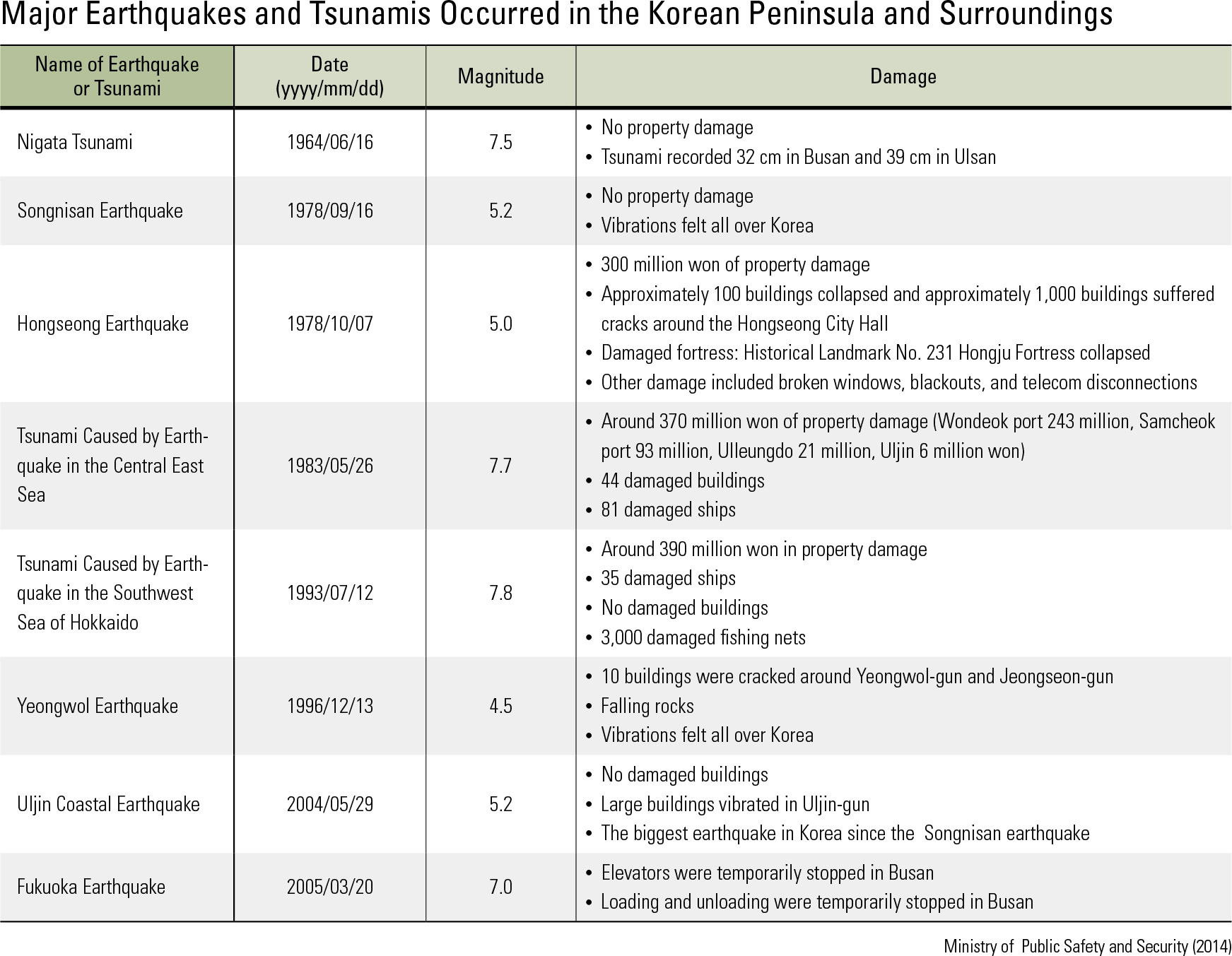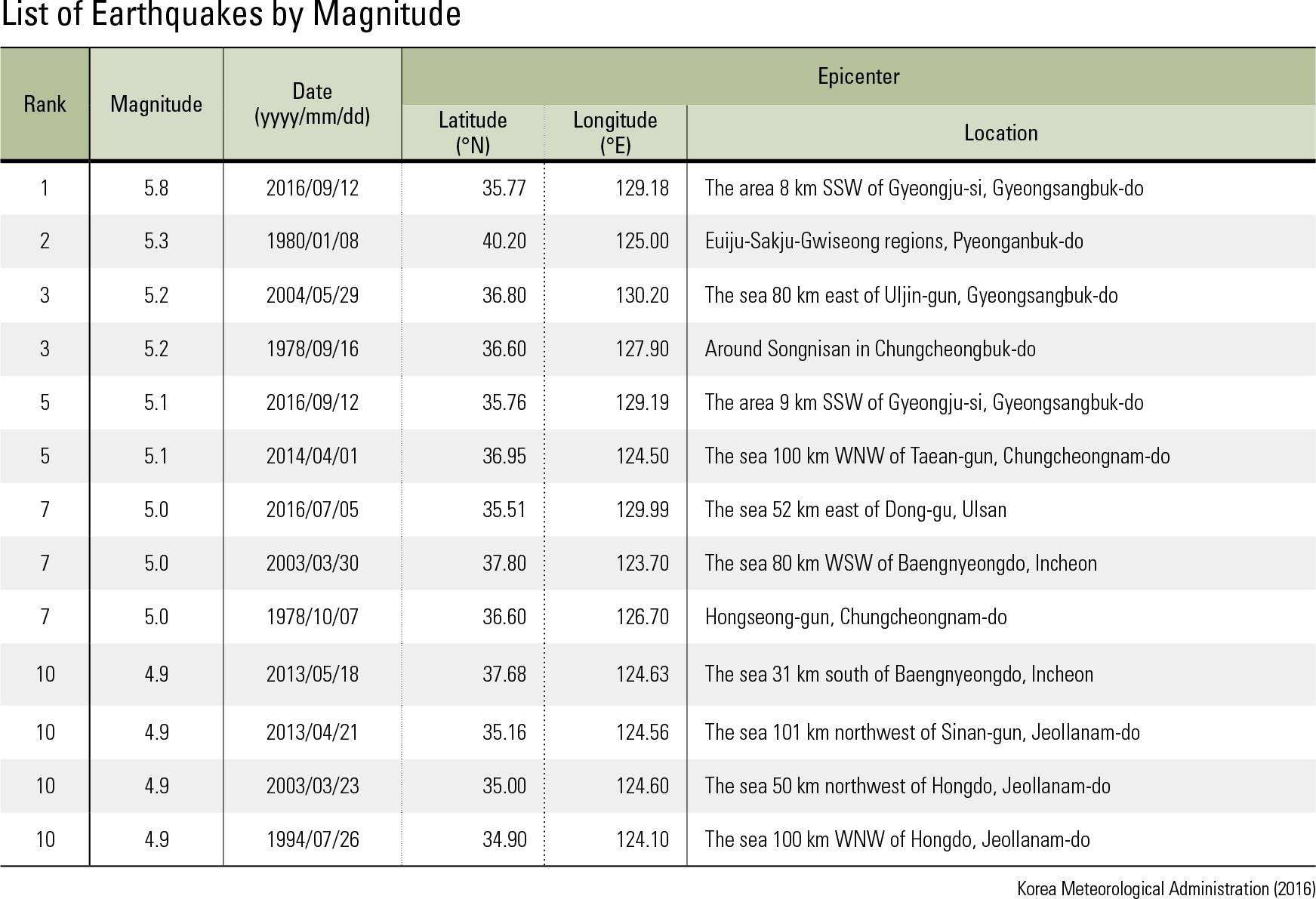English II
In 2014, there were 49 earthquakes with a mag- nitude over 2.0, which was similar to the annual average number of earthquakes (47.7 earthquakes) during the period from 1999 when digital survey- ing began and had been conducted 2013. There were 8 earthquakes with a magnitude over 3.0 in 2014, which was below the annual average num- ber of earthquakes (9.8 earthquakes) for the same period. Earthquakes were felt 11 times, which was more than the annual average (8.7 events). The yearly record for earthquakes increased after the mid-1990s; the increased number of earthquakes re ects the expansion on earthquake observations due to improved observation techniques. There is no clear change in frequency of occurrences of earthquakes over 3.0 magnitude and earthquakes that are felt. Seismic sea waves or tsunamis occur when the sea oor is uplifted and sunk by earth- quakes; huge waves are created that spread in all directions, reaching coastal regions. When a tsunami occurs, huge waves can reach the coastal regions, causing much damage. In 1983 and 1993, the east coast of Korea was damaged due to tsu- namis that had originated from Japan.
page_2 |





